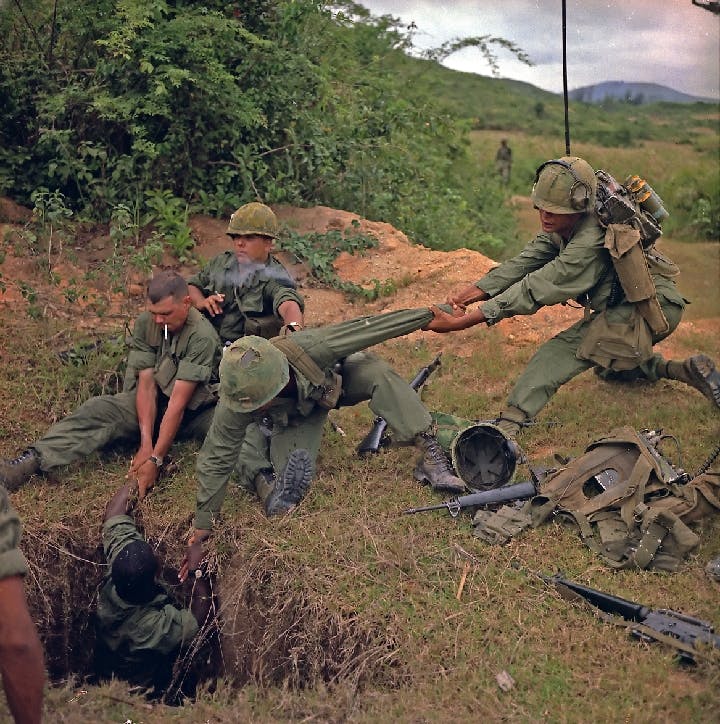Winter 2008
Debunking the Stereotype: Not so High in Vietnam
– The Wilson Quarterly
The American public bought into a sensationalized media portrait of addicted Vietnam soldiers. Alcohol was more of a problem, but the stereotype persists.
More than 30 years after the U.S. military pulled out of Saigon, last year’s popular movie American Gangster used heroin smuggling during the Vietnam War as a universally recognizable backdrop for a thriller about drug dealing. But Jeremy Kuzmarov, a visiting historian at Bucknell University, says that the ’Nam junkie is largely a myth fostered by the news media and sensationalized by Hollywood.
Drug use among U.S. troops in Vietnam, he writes, was “far from omnipresent, confined largely to the rear,” and did not cause “combat breakdown or the military’s collapse.” Drugs were less prevalent than alcohol and less socially destructive. A 1970 study showed that 28.9 percent of GIs surveyed had experimented with marijuana during their tour of duty, a figure comparable to rates in the United States for men 18 to 21. But newspapers and magazines inflated the results of a study showing that a majority of U.S. personnel jailed at the Army’s stockade in Long Binh had used marijuana to suggest that 60 to 90 percent of American solders in Vietnam were on drugs, according to Kuzmarov.
The Washington Post reported that the first thing soldiers did after killing a North Vietnamese fighter was to search him for his “stash,” although Kuzmarov writes that Vietnamese who used drugs rarely smoked marijuana, preferring to chew betel nuts or smoke opium. CBS News broadcast a report that American soldiers were getting high from opium-laced marijuana inhaled through the barrels of their guns, failing to note that the incident in question was staged as an antiwar stunt.The New York Times said, without citing evidence, that the North Vietnamese were peddling “brain dulling marijuana” to American GIs.
Pentagon research showed that about half of American soldiers who smoked marijuana had done so fewer than 10 times, and less than 10 percent of soldiers used drugs more than two or three times. About six percent of departing soldiers tested positive for drugs in 1971, a number that dropped below two percent in 1972, although the latter number is disputed because of laboratory problems.
Americans, Kuzmarov says, overlooked a real alcohol epidemic in Vietnam, and absorbed a sensationalized media portrait of an “addicted army” ravaged by drugs. The media linked “wasted” Vietnam veterans to a rise in the nation’s crime rate. Subsequent research, Kuzmarov writes, has shown that less than one half of one percent of Vietnam veterans committed a single crime after they returned from the war.
* * *
The Source: “The Myth of the ‘Addicted Army’: Drug Use in Vietnam in Historical Perspective” by Jeremy Kuzmarov, in War and Society, Oct. 2007.
Photo courtesy of Wikimedia Commons
